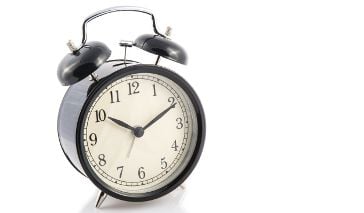Overactive bladder occurs when sudden or frequent urges to urinate become hard to control, and can often lead to leakage (urinary incontinence).
In order to best treat overactive bladder, a urologist must pinpoint the underlying cause. Treatment will depend on symptom severity and the degree to which they impact someone's quality of life. In general, there are three approaches to treatment: medication, behavioral interventions, and surgery.
Medications for Overactive Bladder
Medications for overactive bladder target muscles that control bladder function. These drugs can be used alone or in combination, and include:
- Anticholinergics such as trospium (Sanctura), darifenacin (Enablex) and oxybutynin (Oxytrol, Ditrpoan) relax bladder muscles. They are the most commonly prescribed medications for overactive bladder and are well tolerated. Side effects include constipation and dry mouth.
- Tricyclic antidepressants, such as imipramine and doxepin, stop contractions in the smooth muscle of the bladder. Side effects include dizziness, fatigue, changes in vision, nausea, insomnia, and dry mouth.
Behavioral Modification for the Treatment of Overactive Bladder
Various types of behavioral modifications may also be recommended for the treatment of overactive bladder. Examples include:
- Dietary Changes: Decreasing water consumption throughout the day can help reduce leakage, as can avoiding substances that irritate the bladder, such as caffeine, fruit juices, and spicy foods.
- Bladder Retraining: This method uses a set schedule for urination throughout the day. Between these times, no urination is allowed, even if leaks occur. The goal is to increase the time between bathroom visits to three to four hours.
- Electrical Stimulation and Biofeedback: This technique provides information about when a patient is squeezing the muscles of her pelvic floor. A sensor is placed in the vagina (women) or anus (men) so that pelvic floor muscle contractions can be recorded. Exercises can help strengthen weak pelvic floor muscles, and if they don't respond, electrical stimulation can activate the appropriate muscles.
Surgical Treatment for Overactive Bladder
Surgery may recommended for severe cases. The two most-commonly used procedures are:
- Augmentation cystoplasty increases bladder size by removing a section of the bowel and adding it to the bladder. Increased bladder size allows someone to store more urine, reducing the urge to urinate. Possible complications include infection, blood clots, bowel obstruction, urinary fistula, and an increased risk of bladder tumors (bladder cancer).
- Sacral Nerve Stimulation is a newer surgical technique that involves placing a small electrical device in the lower back. The device sends electrical impulses to the sacral nerve, which improves control of the muscles in the bladder and pelvic floor.
Prognosis after Overactive Bladder Treatment
Prognosis following treatment will depend on the severity of the patient's symptoms and the treatment itself. Overactive bladder is typically a chronic or long-term problem and may require ongoing treatment to control symptoms and reduce incontinence.
References
Reyblat, P., & Ginsberg, D.A. (2008). Augmentation cystoplasty: What are the indications? Current Urology Reports, 9(6), 452-458.


